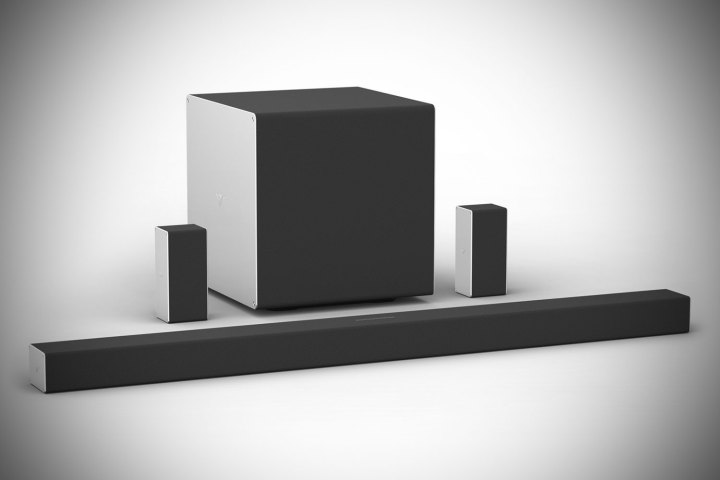
Vizio unveiled its 2018 4K TV lineup today, but any home theater enthusiast knows that the picture is only part of the equation — sound is equally important. Vizio is clearly aware of this, as alongside the new TVs, the company also announced three new soundbars, all of which feature Dolby Atmos object-based surround sound for maximum immersion.
In case you’re not familiar, Dolby Atmos takes surround sound beyond the typical 5.1-channel setup by adding height information. This is generally accomplished by upward-facing speakers to bounce sound off the ceiling, so instead of 5.1, you’ll see numbers like 5.1.4 or 5.1.2, with the third number being the number of height channels. This allows for effects like the sound of a helicopter not only going left to right, but going above you as well.
“Vizio is continuously engineering ways to improve the home-entertainment experience for consumers, and this next iteration of audio solutions proves just that,” Vizio chief technology officer Bill Baxter said in a statement. “By integrating Dolby Atmos into our all-new home theater sound bar systems, we’re able to bring premium, multidimensional cinema-quality audio into the home. Our flagship 46-inch 5.1.4 system features four upward-firing speakers that allow sound to reflect off the ceiling, encapsulating listeners and wrapping the entire viewing area with sound.”

In addition to the flagship 46-inch 5.1.4-channel model, another 46-inch model is available in a 3.1.2-channel configuration. A smaller 36-inch 5.1.2-channel model is also available for those who are looking to save a little space. Each model features Google Chromecast Built-In, enabling Chromecast-enabled apps like Spotify, Pandora, iHeartRadio, and Google Play Music to easily play music through the soundbar. The three soundbars also feature Google Assistant integration with voice-control, allowing the soundbars to act as a hub for your compatible smart home devices.

Alongside the three Atmos soundbars, Vizio also announced the new 36-inch 2.1 Sound Bar with Dual Subwoofers. This model, designed for secondary televisions in the house, doesn’t boast all the features of the above models, but does include support Dolby Audio and DTS Virtual:X as well as Bluetooth connectivity. It also has a different industrial design, with angled speakers. Vizio said that it gives it a slimmer profile for fitting underneath a TV.

Vizio hasn’t announced pricing for the new soundbars, or an exact release date, but says that the systems will hit retailers this summer. We haven’t heard these new soundbars in person, but Vizio’s SB3621 is our current pick for the best budget soundbar you can buy, so we’re expecting good things. In the meantime, if you’re considering buying a soundbar, be sure to check our buying guide.


